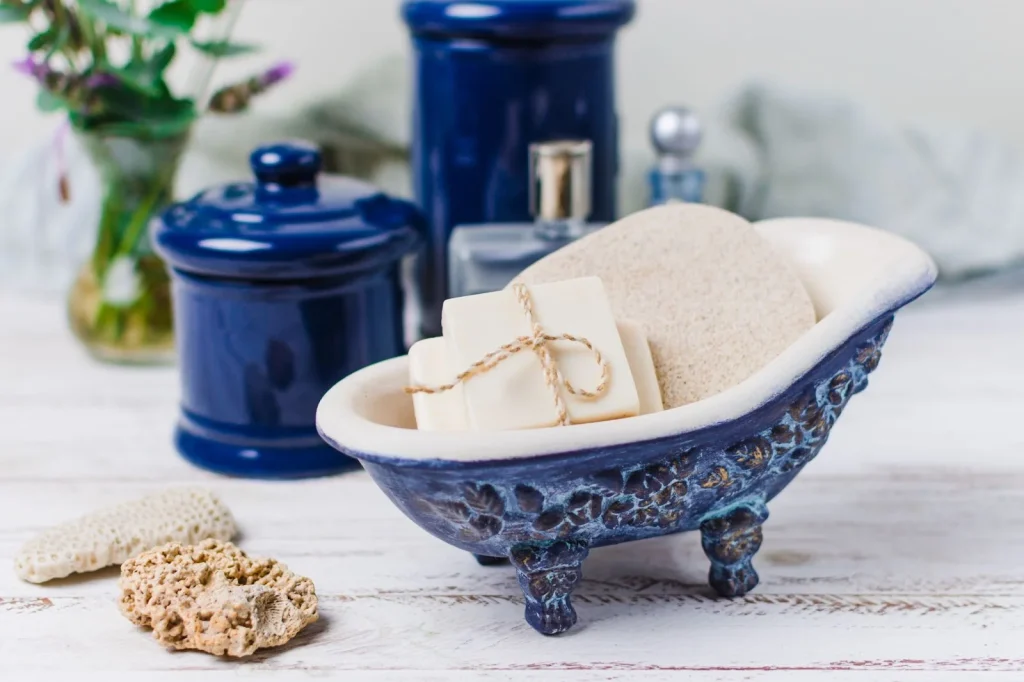Today’s world is so full of constant and varied tasks that there is nothing left to do but to look for opportunities to enjoy moments of complete relaxation. One way to completely escape from the daily routine is to take a Morocco bath. You may have never heard of it, but this is a traditional North African practice; you are not just bathing but performing a ritual that will nourish the body, calm the mind and rejuvenate the spirit.
The History Of Moroccan Bath
Moroccan baths, or hammams, have a long history of several centuries. At first, the baths were public spaces wherein communities visited not only to clean themselves but also to socialize. The practice evolved with time, blending ancient techniques with modern wellness ideologies. Today, Moroccan baths are famous in spas worldwide, offering a unique way to combine cultural heritage with self-care.
The sensory nature of a Moroccan bath is its charm. Warm water, perfumed oils, natural abrasives, and gentle body massage are the factors used. It is an experience on the body and not a soak in the tub. The ritual is designed to soften the body and mind, hence it is distinct from a soak.
Preparing For A Moroccan Bath
Prior to entering a Moroccan bath, it is beneficial to be aware of the process. The practice typically begins with a session of light warming, wherein the steam opens up the body. This process softens the skin and heats up muscles for release. The second step is exfoliation, typically with a traditional glove or natural scrubbing, which removes dead skin cells. The final steps are the use of moisturizing oils and a calming massage, refreshing and rejuvenating the body.
For first-timers, it is best to consult preferences and sensitivities with the therapist. Pressure, heat, and oil type may be modified, making the session comfortable and effective too.
Benefits Of A Moroccan Bath
The advantages of a Moroccan bath are more than luxury. People usually note improvement in both their physical and emotional well-being after just one session. Some of the most significant benefits are:
- Increased circulation – Heat, massage, and movement provoke blood flow through the body.
- Skin renewal – Exfoliation and natural oils soften and pamper the skin, leaving it glowing.
- Muscle relaxation – Gentle massage eases tension in most over-taxed areas, such as the back, shoulders, and legs.
- Detoxification – Hot steam and exfoliation eliminate toxins and aid the body’s natural detoxifying processes.
- Stress reduction – The bathing process calms the nervous system and leaves one with a sense of mental acuity.
The effects last beyond the actual session. Many clients say that a Moroccan bath leaves them more alert, focused, and better able to handle everyday tasks with renewed energy.
The Ritual Experience
Something that makes a Moroccan bath unique is the sensory experience of the bath. The environment is particularly designed to create relaxation: soft illumination, calming scents, and soothing music all contribute to an overall atmosphere of relaxation. Each step of the ritual serves a purpose, aiding the participant in moving from tension to relaxation effortlessly.
The massage and oiling are particularly important. While the scrubbing is removing dead skin cells, the oils penetrate deep into the skin, moisturizing and reviving. This combination of exfoliating and hydrating produces a long-lasting effect, leaving the skin smooth and supple long after the spa treatment.
How To Get The Most Out Of The Experience
While the spa provides the perfect ambiance, there are steps that can be followed in order to benefit most from a Moroccan bath. Arriving a couple of minutes early to unwind the body and mind first is perfect. Pre- and post-treatment hydration with water ensures circulation and enables the body to respond better to the heat. Deep, conscious breathing during the ritual heightens relaxation and makes it an even more immersive experience.
For people who visit Moroccan baths on a regular basis, the addition of complementary practices could further increase benefits. Stretching, meditation, or light yoga before or after a session could help avoid loss of flexibility and prolong the relaxing feeling.
Adding Moroccan Baths To A Wellness Plan
Morning and evening bath sessions using Daily Morocco are included in an overall well-being routine. These are used by most people in combination with other therapies such as massage therapy, aromatherapy, or breathing exercises. The combination enhances global well-being and helps maintain balance and energy for the week.
For the busy traveler or simply for someone with a busy lifestyle, pre-booking appointments ensures punctuality. The ritual in a Moroccan bath adds a level of anticipation and consciousness to the experience, making it more than simply a spa visit—it is now a meaningful, restorative ritual.
Conclusion
A Moroccan bath is a holistic sensory experience for the body, mind, and senses alike. In combining warm steam, exfoliation, therapeutic oils, and gentle massage, it offers a unique approach to relaxation and self-indulgence. Beyond the short-term relief of refreshed skin and eased tension, the ritual leads to mental concentration, diminished stress, and a deep-seated sense of well-being.
Whether one visits a spa or replicates the treatment at home, the Moroccan bath is a relaxing experience that not only provides cultural insight but also personal rejuvenation. Transposing it into a daily wellness regimen ensures that both mind and body are always well-balanced, energized, and ready to face the demands of everyday living.









